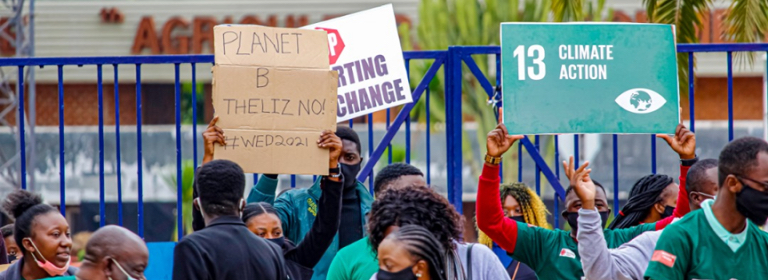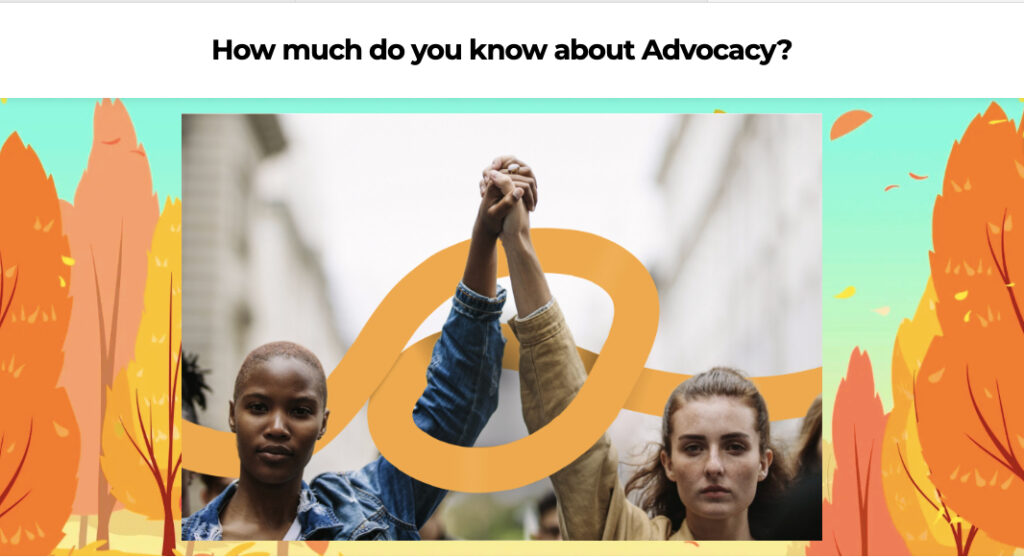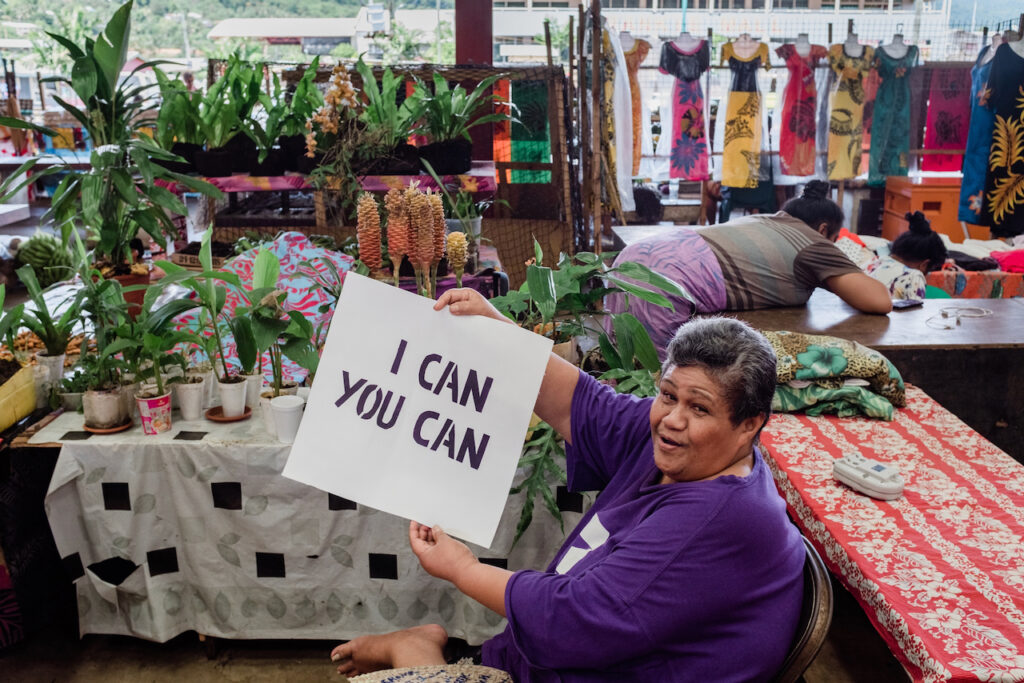Module 2: Taking an action towards the SDGs fulfilment –> Section 1: How to take an action for your cause

Would you like to bring positive change to your local community but aren’t sure how to begin? In this module, a few good practices will be introduced, which you can use to get inspired.
There are several paths you can take when addressing issues that matter to you and/or your nonprofit organization. In this section three main approaches will be discussed:
- raising awareness
- advocacy work
- engagement with the media
Awareness Raising Activities
The target group of awareness-raising campaign is usually general public. There are some effective tools that can be used to raise awareness about sustainable development, SDGs and social inclusion. They can also be used to promote the idea of the 2030 UN agenda ‘Leaving no one left behind’ in your community.
Watch the TEDx talk of Susan Adams – an awarded Eco UNESCO leader of the Year 2017 for her work in Irish schools leading young people to make a direct impact on their environment (The power of taking action).
Depending on your budget you may consider preparing:
- Leaflets – Create brief and concise leaflets, factsheets or banners with logos or slogans that hold the key information you would like to promote. You can hand out these materials during awareness-raising events or festivals.
- A rally – Stage a peaceful demonstration demanding the better implementation of the SDGs. It could be just several people standing outside of their representative’s office, holding signs to show where they stand on an issue.
- Photo exhibition – Use photography as a tool to raise awareness for pressing issues. Art has the potential to represent a shared language for groups of different origins, cultures, or social status. It’s a powerful inclusive campaigning tool that is easily understandable for the broad public.
- A public discussion – Organize a community level public discussion with young people or in communities of marginalized people. You could include an interview or debate with the local or national MPs or mayors to share a public statement and request a response from those authorities.
Watch a digital art exhibition dedicated to inspiring and mobilizing action for the UN Sustainable Development Goals – set to be unveiled at the 2023 Sustainability Summit held in New York, as world leaders gathered at UN Headquarters for the high-level opening session of the General Assembly. (Digital Art Exhibition)
Read more about How to take an action by awareness-raising campaign in this UNESCO case study (Principles of awareness-raising for information literacy).
Powerful Advocacy activities
The target group of advocacy activities are local / regional authorities and political representatives, parliamentarians and/or whole governments. Advocacy is a process of supporting and enabling people to:
- Express their views, thoughts, and concerns
- Access information, advice, and guidance
- Explore choices and options for services and care
According to the EU Faces of Migration consortium: Advocacy seeks to ensure that all people in society have their voices heard on issues that are important to them, that their rights are protected and promoted, and their views and wishes genuinely considered when decisions are being made about their lives. For example, you may collect the voices of marginalized peoples speaking about their situation, visit the office of local politicians and discuss their pledges on the SDGs.
Advocacy seeks to ensure that all people in society can:
- Have their voices heard on issues that are important to them
- Protect and promote their rights
- Have their views and wishes genuinely considered when decisions are being made about their lives
Take a Kahoot quiz on How your community or nonprofit organization can use Advocacy activities to have their voices heard on issues that are important to them. (How much do you know about Advocacy?)

Before the Advocacy meeting with local / regional authorities and representatives and/or parliamentarians your team should: Know the background of the respective representative and Schedule a meeting: Contact the office of the representative and seek a meeting by sending a letter via e-mail or phone. Also do your homework, decide the number of delegation’s members and who will speak what.
During the advocacy meeting: Thank the representative for the meeting (the meeting may last 20-30 minutes). Make a brief presentation of the issue, its impact, and state key the tasks you want to be performed by the representative. Hand over a 2- to 3-page narration. Listen to their response and follow up eventually if they need more information or support.
Remember: to think about What benefit the representative may receive. Whenever possible, try to convince the representative that taking the issue may be electorally beneficial to him/her and their party.
Read more about the Methods and tools for advocacy in action as a part of Advocacy Toolkit for Diaspora Organizations prepared and used by Danish refugee council.
Engagement with the Media
Consistent engagement with the media (organizing a press conference, distributing a press release and forwarding the campaign results to the media) is always needed. The target group of engagement with the media is primarily media community and secondarily general public.
Press releases, interviews, and informal media contracts are excellent ways of getting your message across. They are the bread and butter of your media relations. The media can be a powerful tool for promoting accountability in relation to government actors and creating awareness about the SDG agenda.

There are several key principles your organization should follow while organizing a successful Press conference for local and national journalists:
- Define the key message (summarized in 3–5 clear points) that you are trying to get out to the public.
- Develop a press kit, a folder of information to give reporters a background info about your issue or SDG-related activity.
- Contact the media and follow up with them over the phone after e- mailing the press advisories / background info to them.
- Select and train your community members (potential guest speakers / interviewees) to be knowledgeable and articulate about the issues.
- Be clear and concise in your speech. Avoid sounding patronizing, assume the audience is intelligent.
Read more on Engaging with the media in the interactive Community tool box by Kansas University – in the Chapter dedicated to Communications to Promote Interest (Arranging a Press Conference).
It’s your turn
After reviewing the content in this section on How to take an action towards positive change and the SDGs fulfilment at the local level, we encourage you to share your ideas on addressing issues that matter to you and your community in the discussion forum below. Think of:
- A potential local politician your delegation would like to meet and shortly describe his/her position (without using their names).
- A potential Advocacy activity your delegation would like to use to have your voices heard on issues that are important to you.
